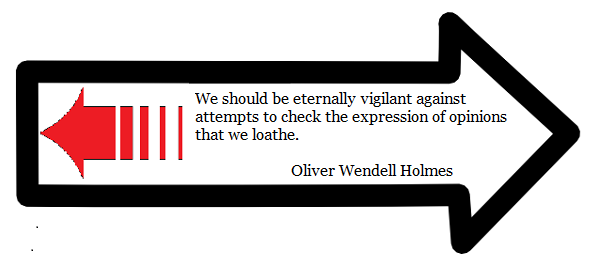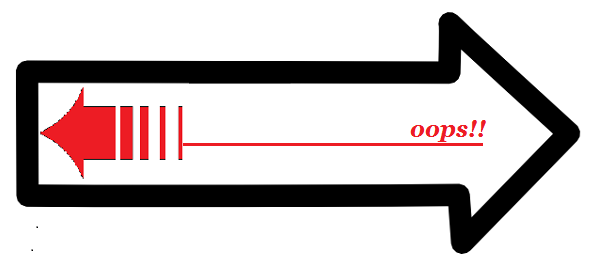[ by Charles Cameron — cf. boustrophedon, enantiodromia, ouroboros, paradox, unintended consequences ]
.
I have had this graphic around for a while:
As you can see, I originally intended it to accompany a quote from Oliver Wendell Holmes:
We should be eternally vigilant against attempts to check the expression of opinions that we loathe.
— but it can actually serve a more general purpose than that — the basic “opposing arrows” graphic can be used to cover all sorts of situations in which a push in one direction results in movement in another. In the OW Holmes example, the two opposed pushes occur within the same person — we are bidden to protect that which we despise.
Here, though, is an instance in which what seems a laudable action on the part of the authorities has a counter-productive result:
No longer a movement that concentrates its brutality on the Nigerian government, [Boko Haram] now attacks mainly civilians, using women and child suicide bombers as its primary weapons of war. The reasons why the group has changed tactics, however, and the complex motives for why women and children have become the weapons of choice, needs to move beyond the fallback narrative of victimhood if attempts to end the unthinkable are to succeed [my emphasis].
That’s essentially the “we learn, they learn” dynamic that’s present in all insurgency-counterinsurgency situations, no? It’s the basis of escalation — it’s what Hermann Kahn‘s Ladder was all about — it’s a bidding war.
But I want to capture it in its most basic moment, when something pulls its opposite into place. The Taoists expressed the same idea very gracefully —
— but maybe that’s just a little too graceful — I’m looking for something just a bit more abrupt, with a more overt sense of tension.
So you may be seeing more of my reverse arropw / blowback diagram:
Oops!! It’s often, though by no means always, a sign of folly.





